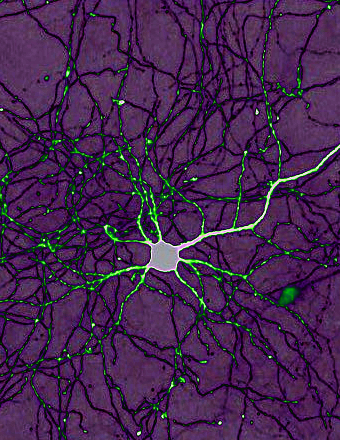Sleeping brain seen 'replaying'
 Scientists have observed a brain organising new thoughts as its host body sleeps.
Scientists have observed a brain organising new thoughts as its host body sleeps.
Researchers have reported the first direct evidence that human brains replay waking experiences while asleep.
The observations were made in two participants with electrodes in their brains as part of a brain-computer interface pilot clinical trial.
During sleep, the brain replays neural firing patterns experienced while awake, also known as ‘offline replay’. This replay has been observed in animals and is thought to underlie memory consolidation, where recent memories acquire more permanence in their neural representation.
The team asked the two participants to take a nap before and after playing a game in which they had to match up coloured tiles in a particular sequence.
The video game had four colour panels that lit up in different sequences for the players to repeat. But instead of moving their arms, the participants played the game with their minds - imagining moving the cursor with their hands to different targets one by one, hitting the correct colours in the correct order as quickly as possible.
While the participants rested, played the game, and then rested again, the researchers recorded the spiking activity of large groups of individual neurons in their brains through an implanted multi-electrode array.
The team observed the same neuronal firing patterns during both the gaming period and the post-game rest period. In other words, it is as though the participants kept playing the game after they were asleep, replaying the same patterns in their brain at a neuronal level.
The findings provide direct evidence of learning-related replay in the human brain.
The findings also open up more questions and future topics of study who want to understand the underlying mechanism by which replay enables memory consolidation.
The next step is to find evidence that replay actually has a causal role in the memory consolidation process. One way to do that would be to test whether there is a relationship between the strength of the replay and the strength of post-nap memory recall.
One of the most intriguing aspects of the study is that it was possible at all.
“There aren't a lot of scenarios in which a person would have a multi-electrode array placed in their brain, where the electrodes are tiny enough to be able to detect the firing activity of individual neurons,” says co-first author Professor Beata Jarosiewicz.
Electrodes approved for medical indications, like those for treating Parkinson's disease or epilepsy, are too big to track the spiking activity of single neurons.
But the electrode arrays used in the latest clinical trials are the first to allow for such detailed neural recordings in the human brain.
The implants were developed by BrainGate - an academic research consortium spanning Brown University, Massachusetts General Hospital, Case Western Reserve University, and Stanford University.
Researchers at BrainGate are working to develop chronically implanted brain-computer interfaces to help people with severe motor disabilities regain communication and control by using their brain signals to move computer cursors, robotic arms, and other assistive devices.
“That's why this study is unprecedented,” Prof Jarosiewicz says.








 Print
Print